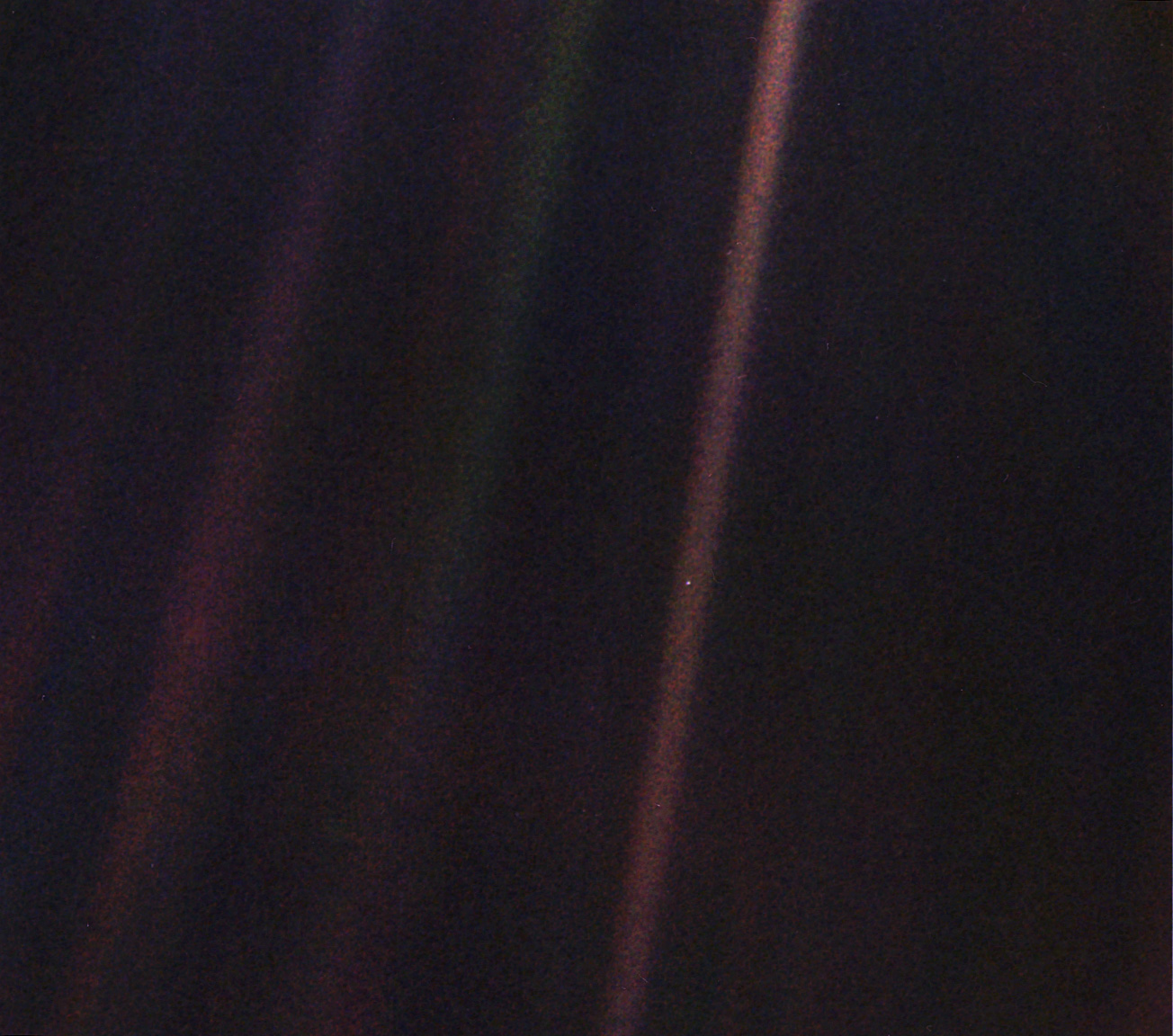The Pale Blue Dot – Revisited

February 5, 2019
| Credit | NASA/JPL-Caltech |
|---|---|
| Historical Date | February 14, 1990 |
| PIA Number | PIA23645 |
| Language |
|
The Pale Blue Dot is a photograph of Earth taken Feb. 14, 1990, by NASA’s Voyager 1 at a distance of 3.7 billion miles (6 billion kilometers) from the Sun. The image inspired the title of scientist Carl Sagan's book, "Pale Blue Dot: A Vision of the Human Future in Space," in which he wrote: "Look again at that dot. That's here. That's home. That's us."
The revised image was processed by JPL engineer and image processing enthusiast Kevin M. Gill with input from two of the image's original planners, Candy Hansen and William Kosmann.

